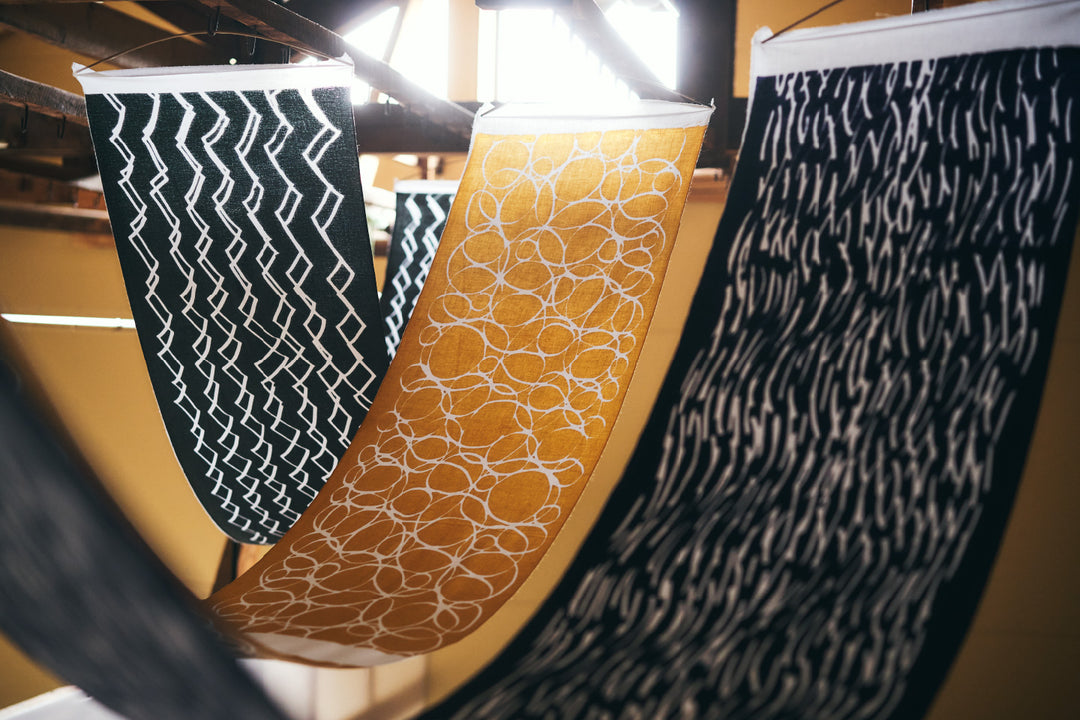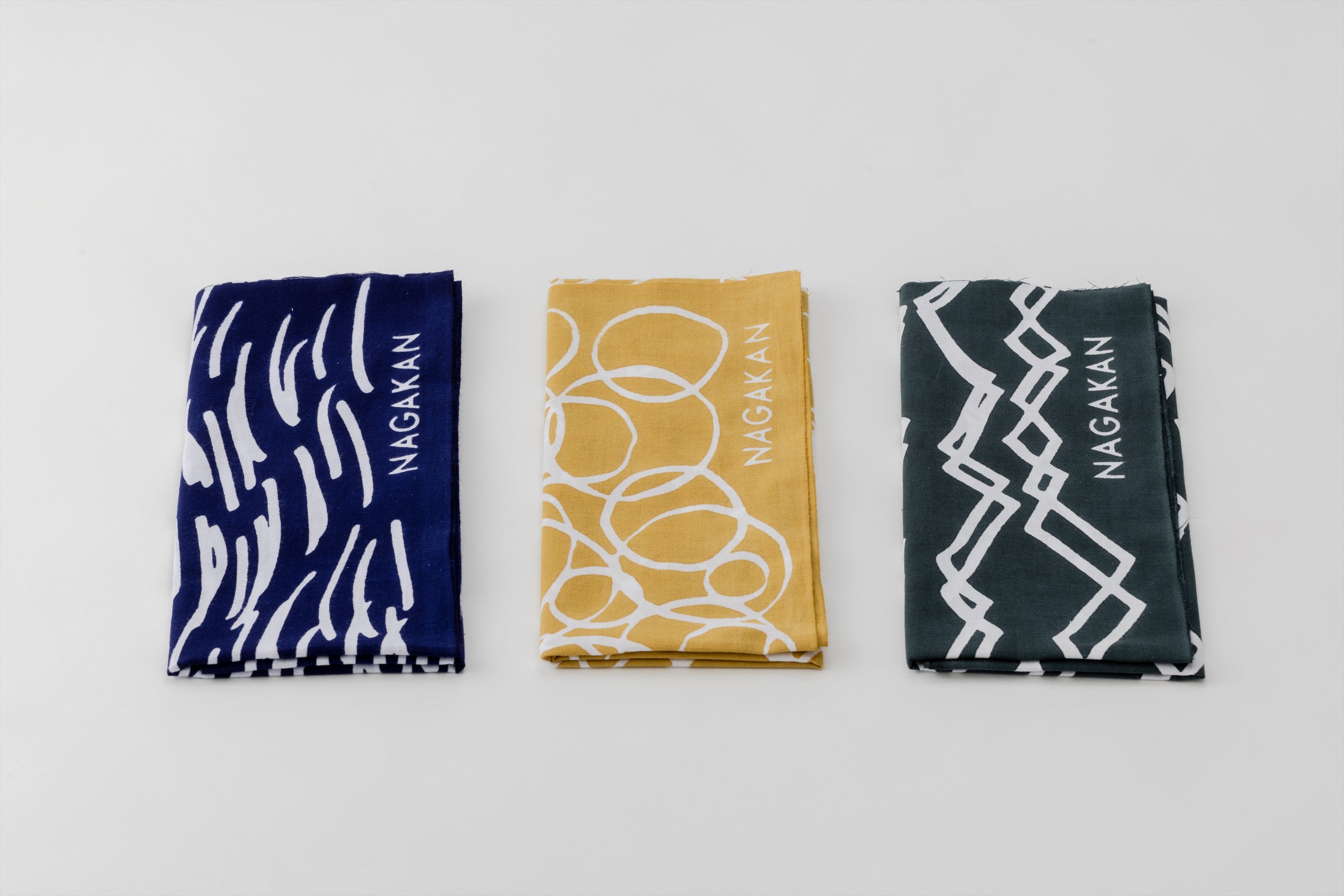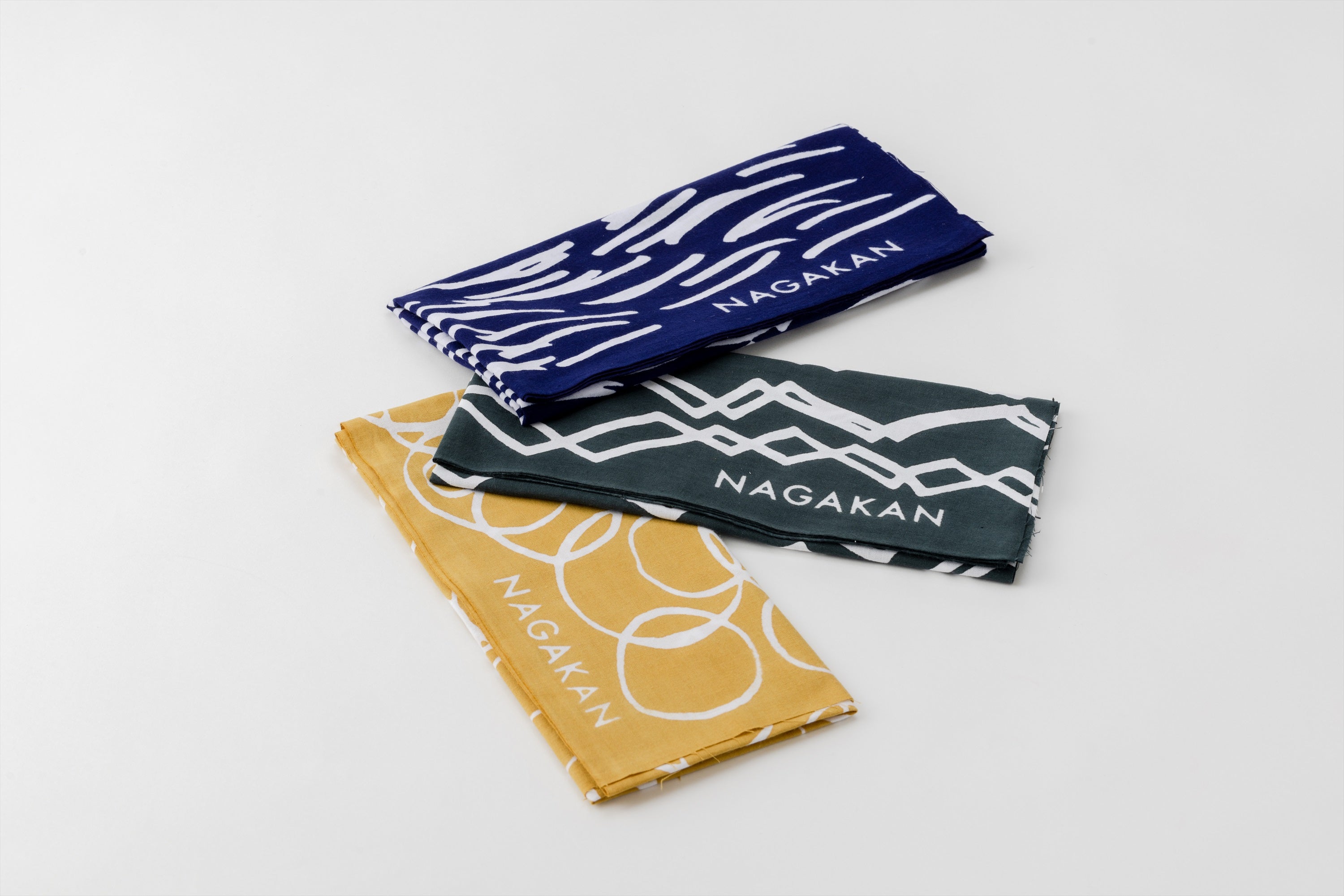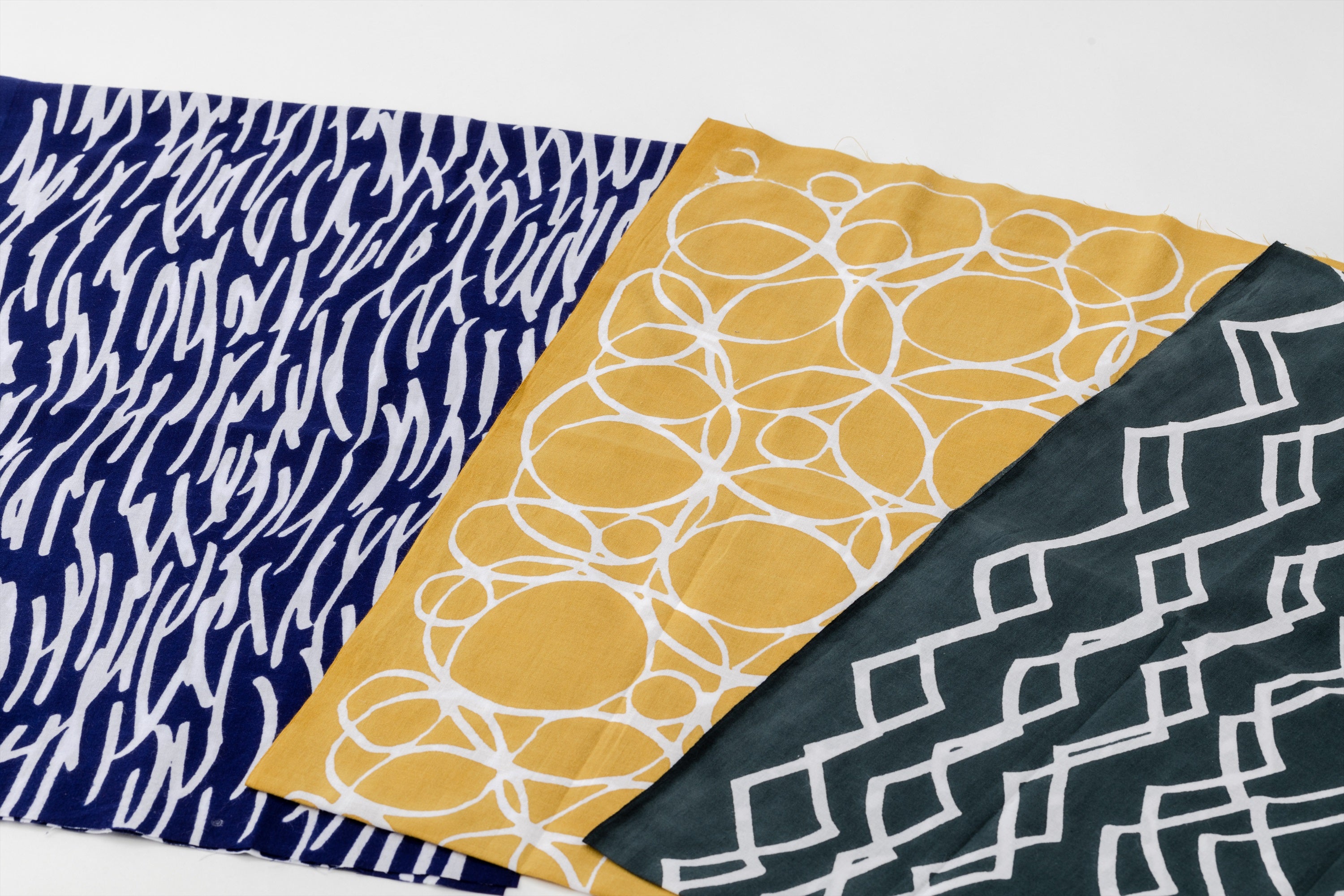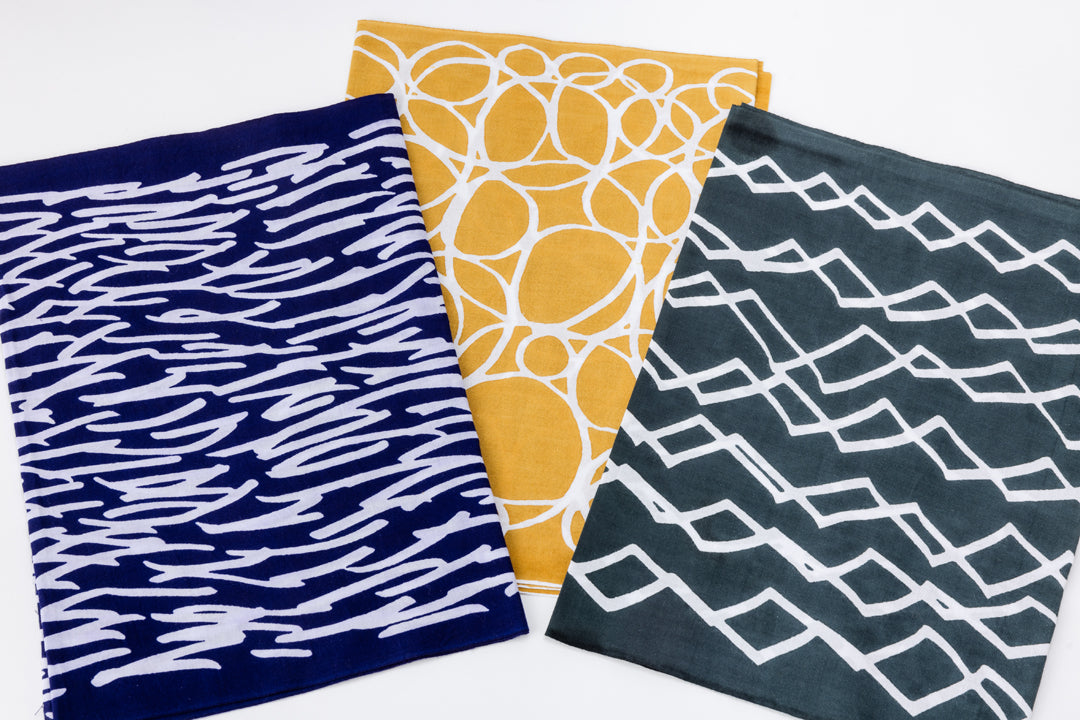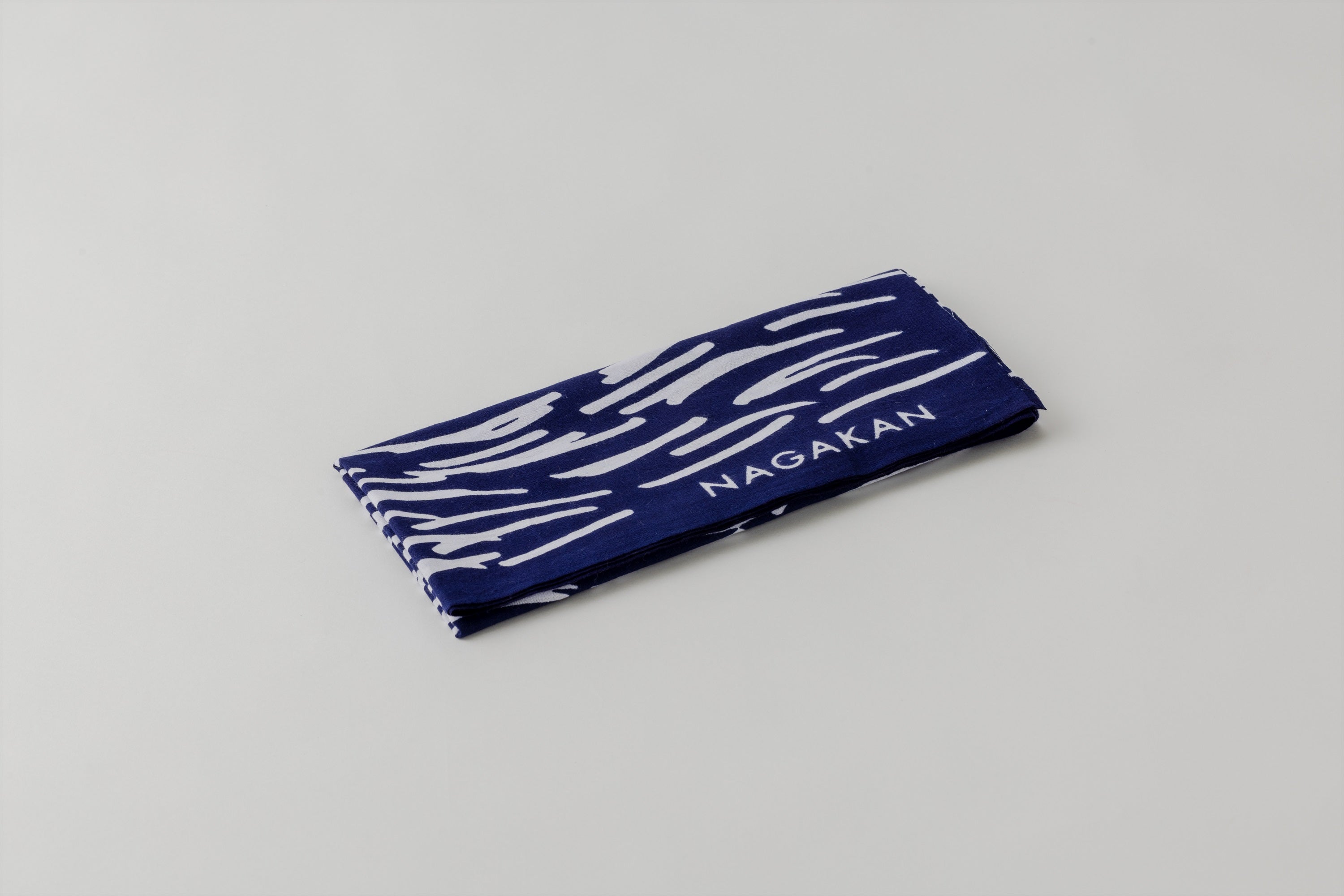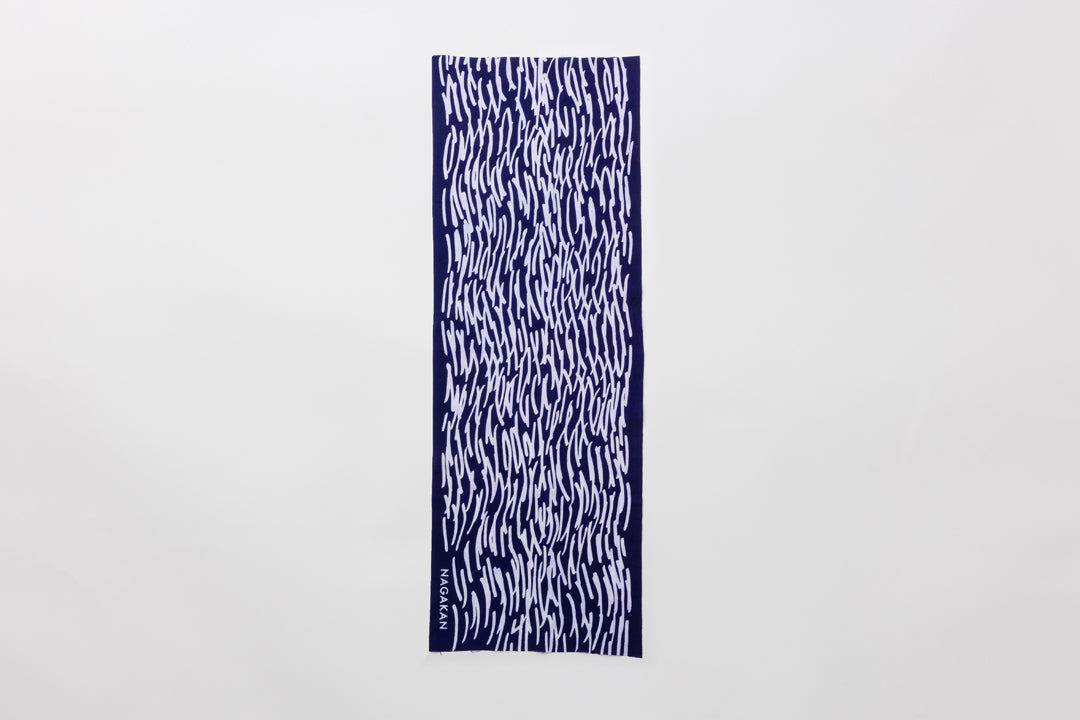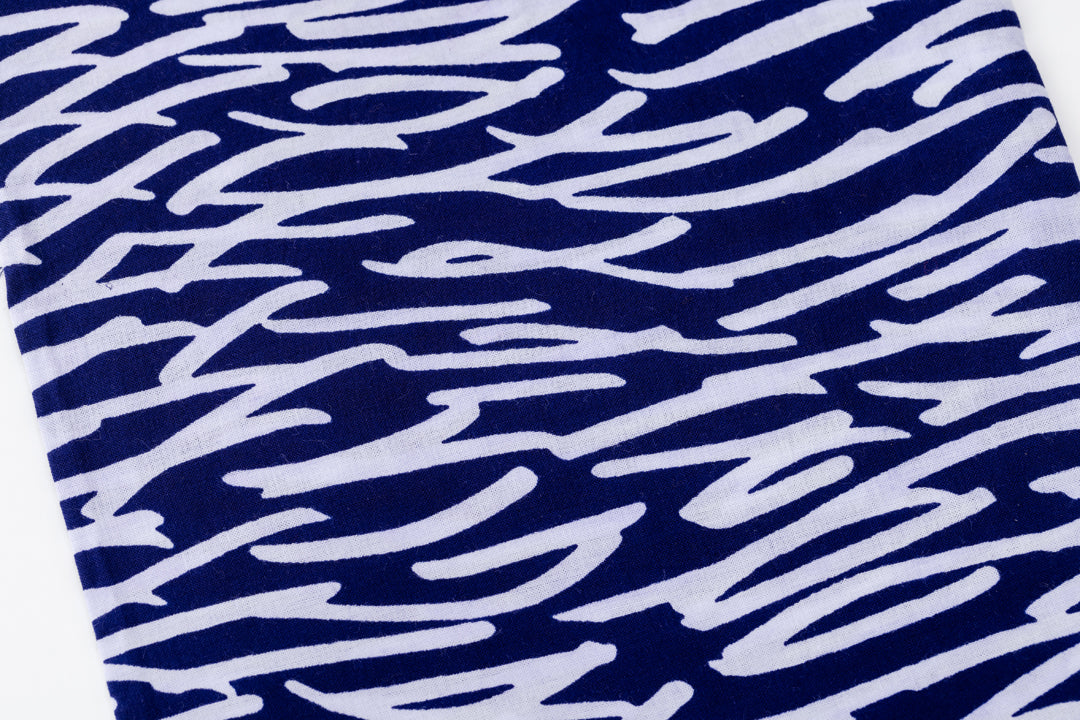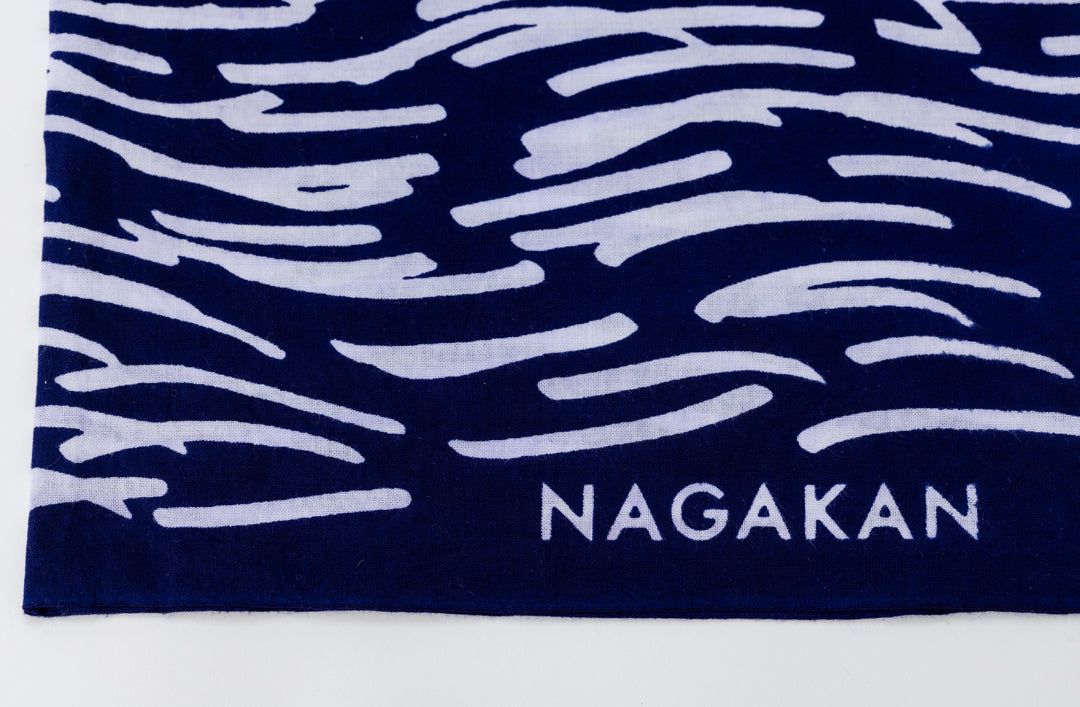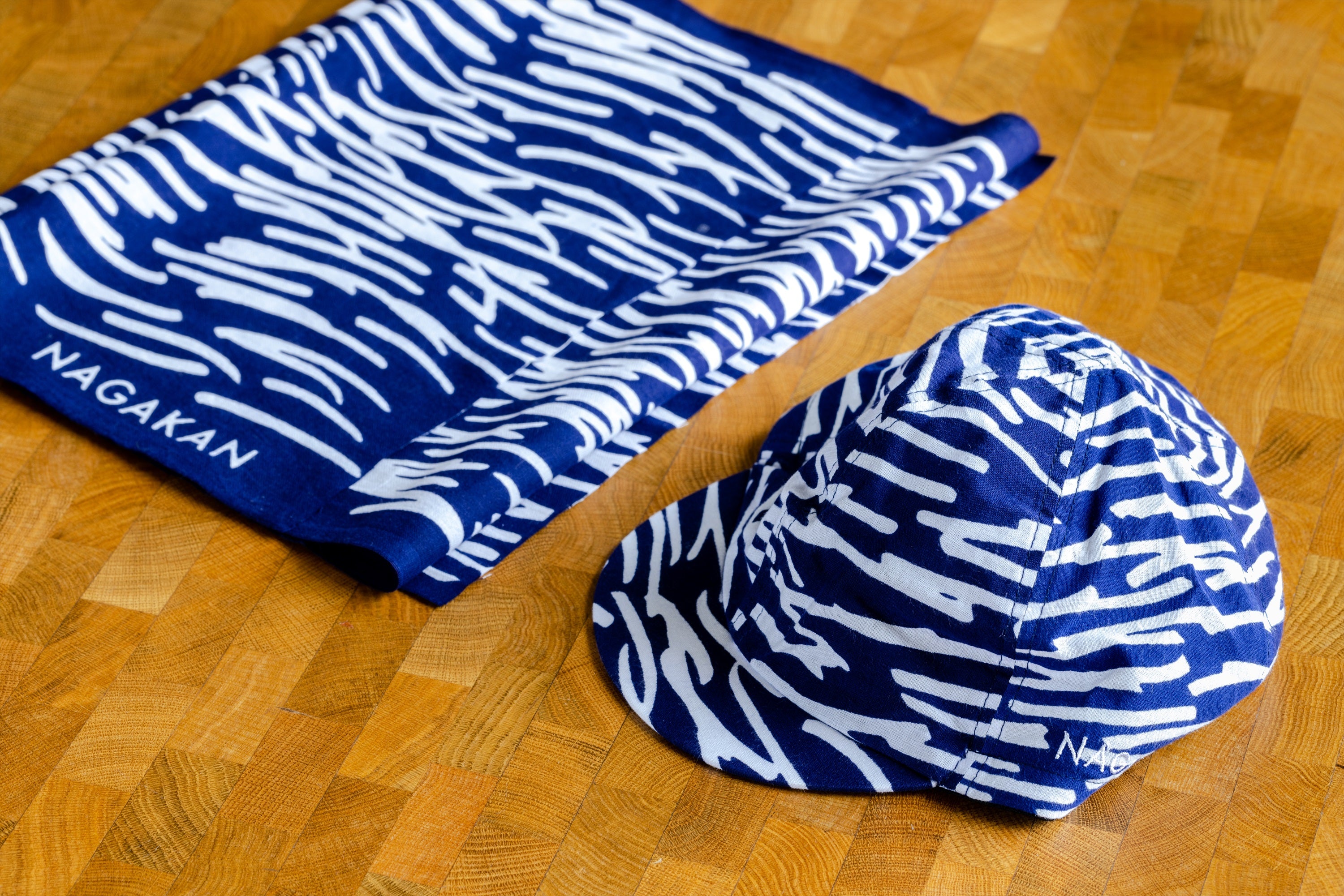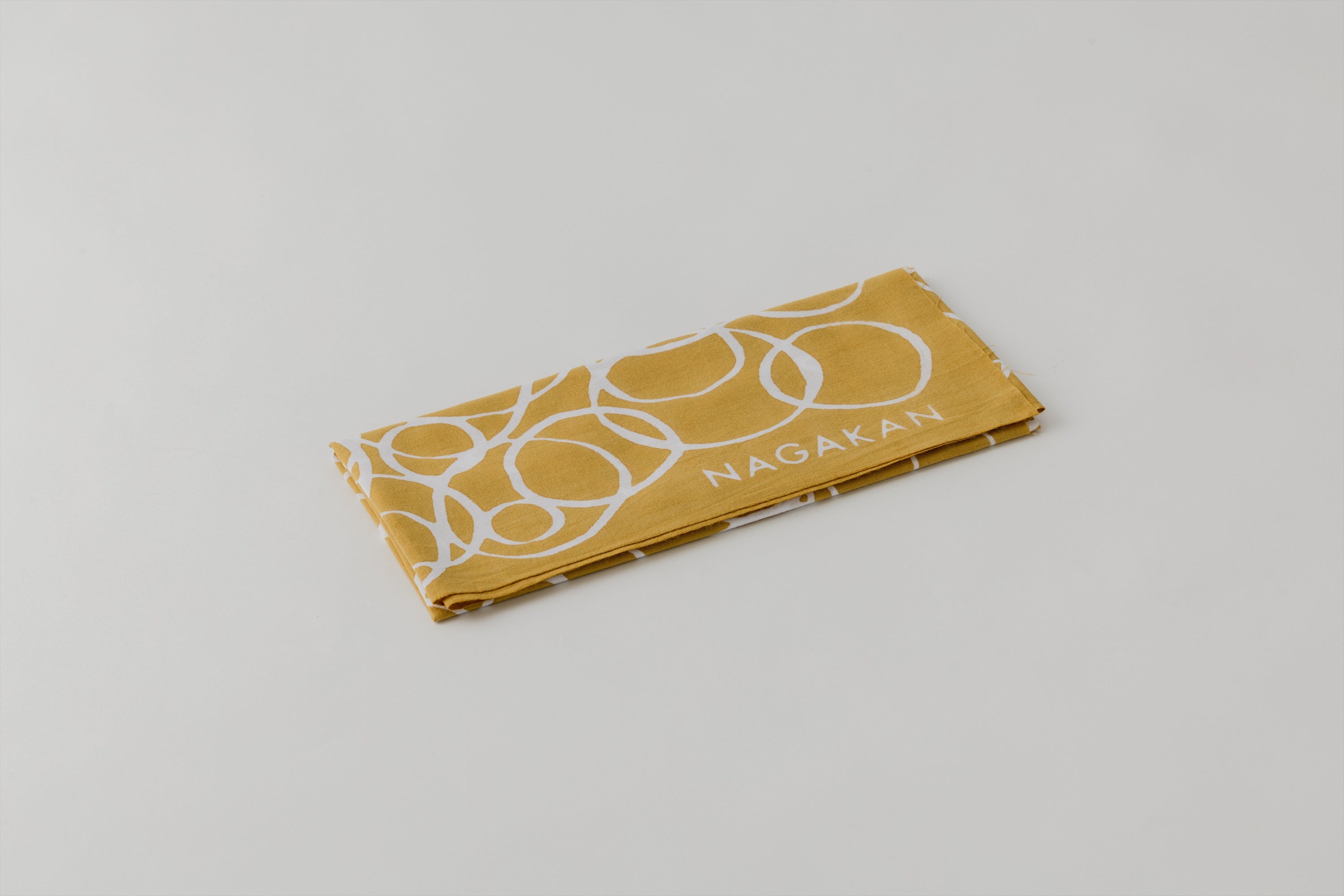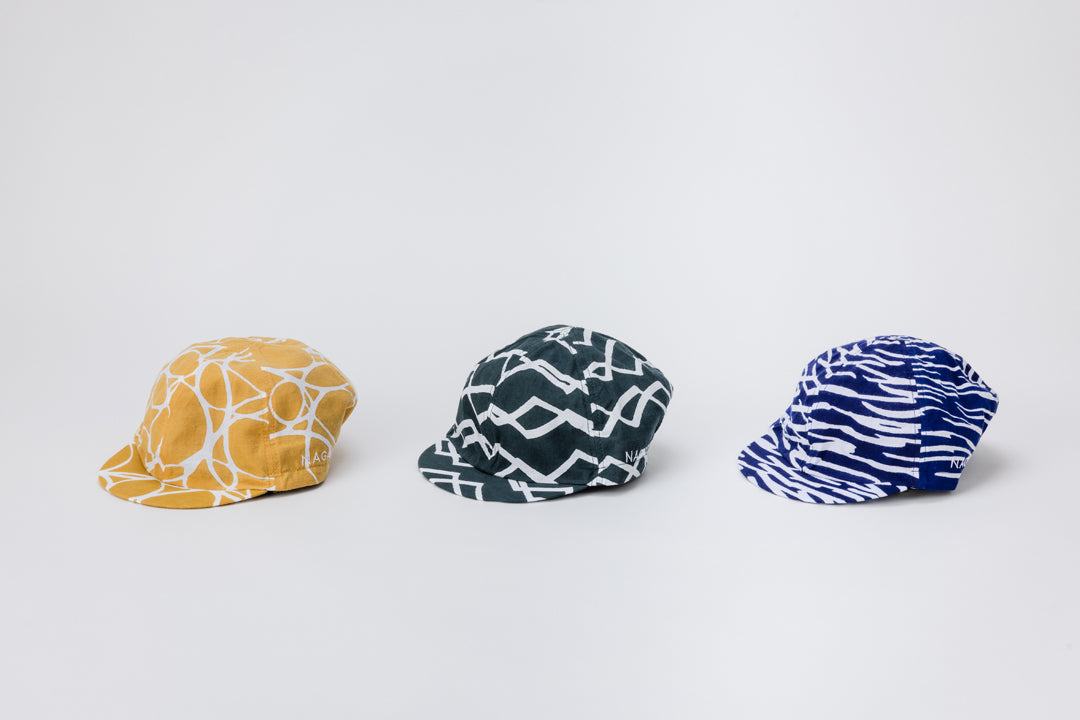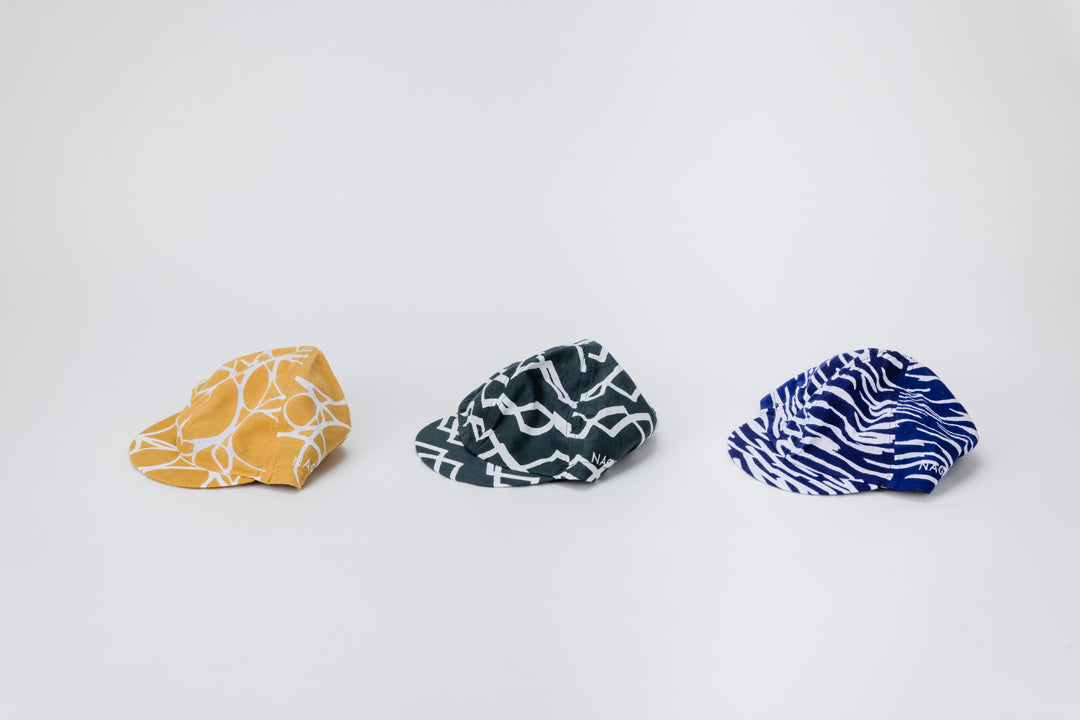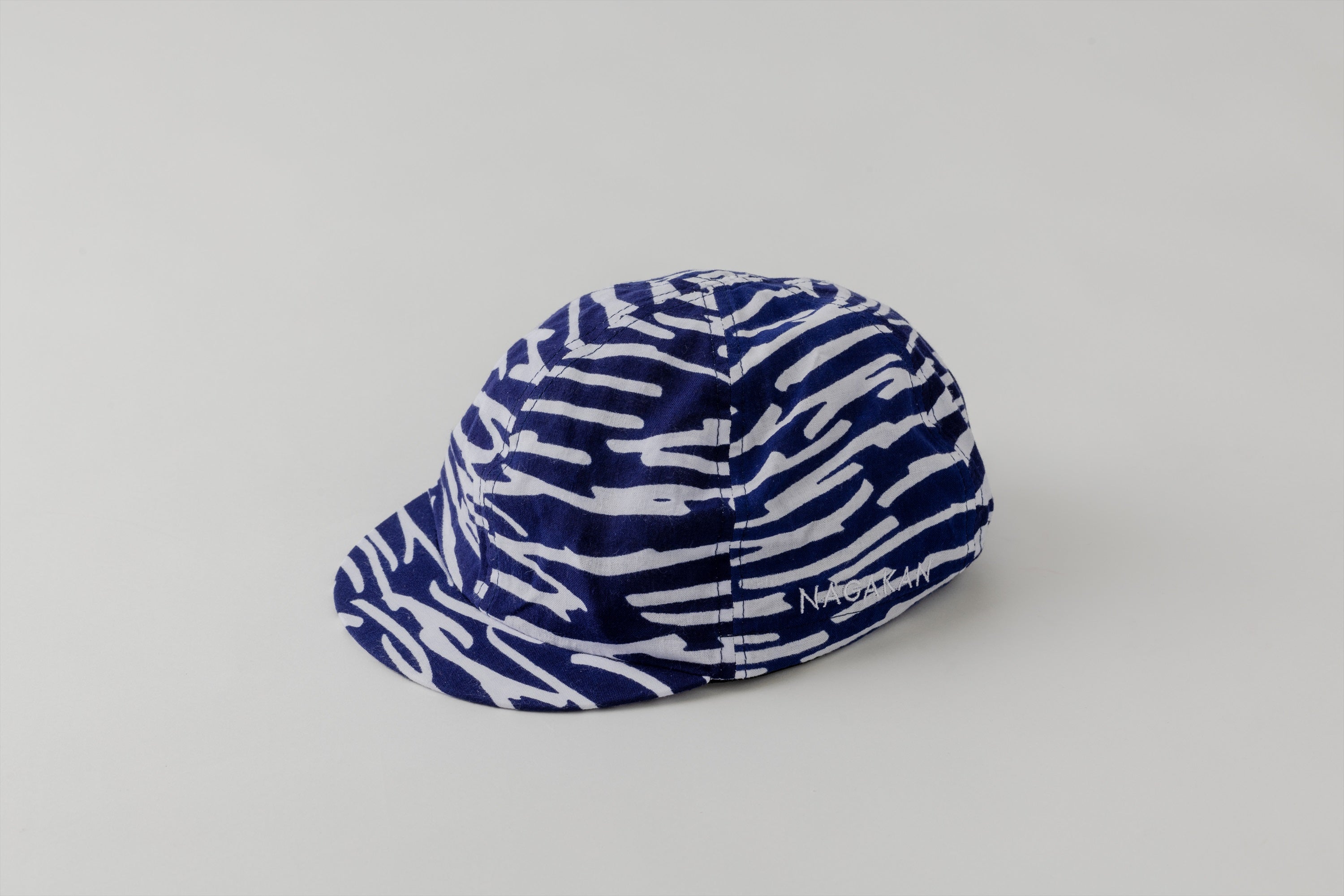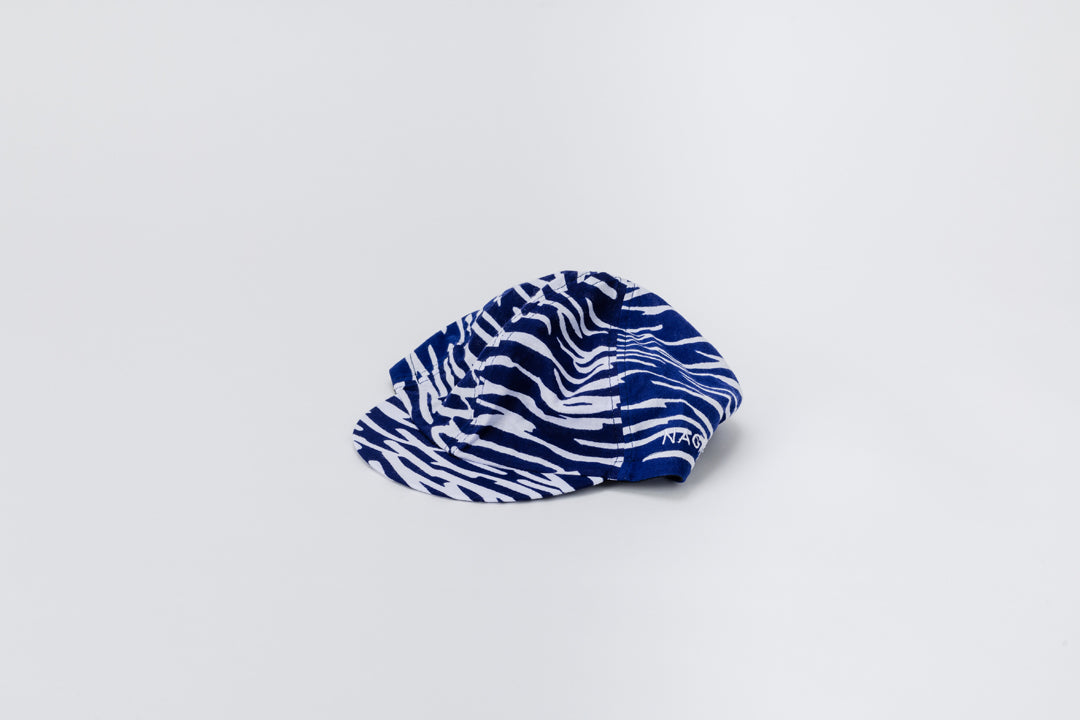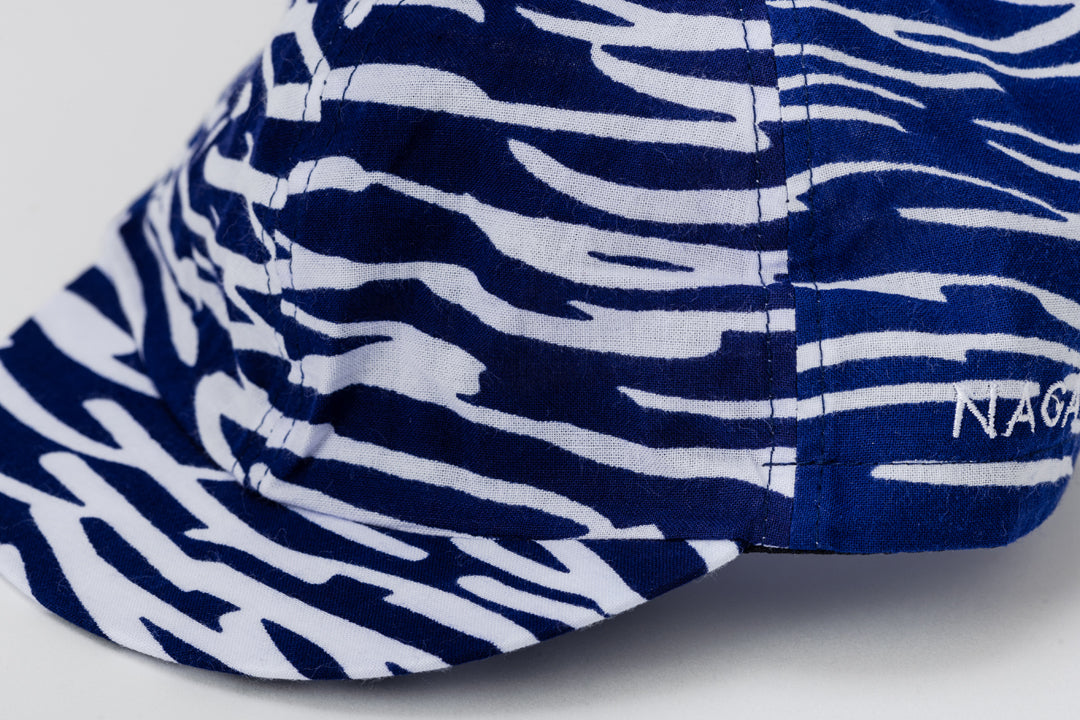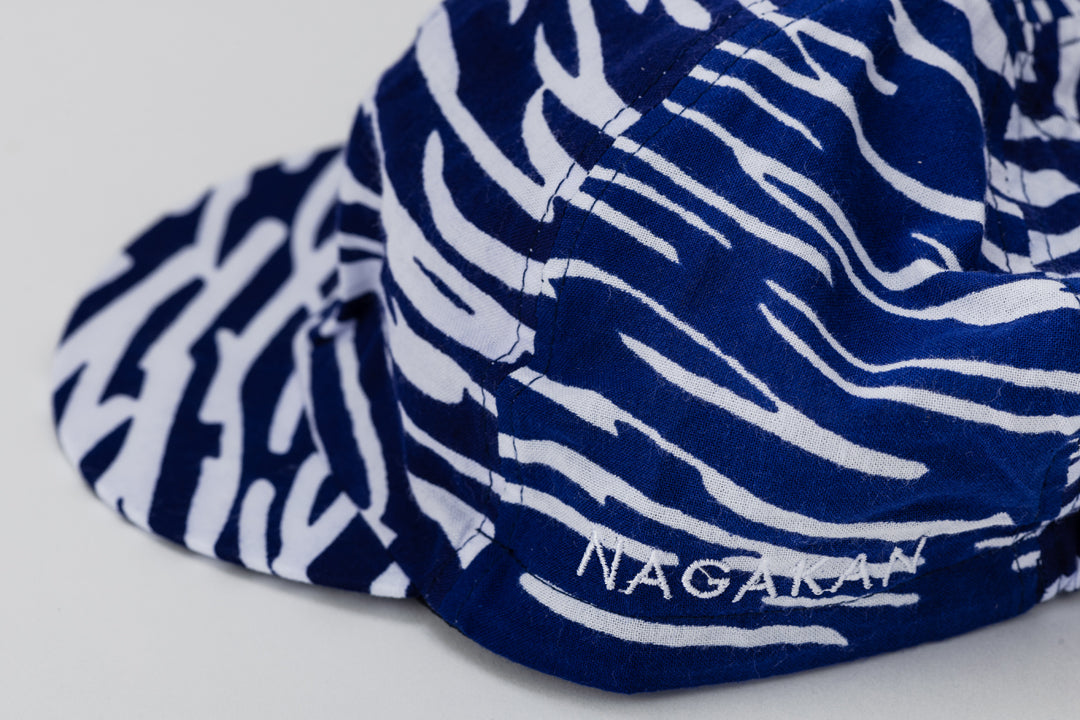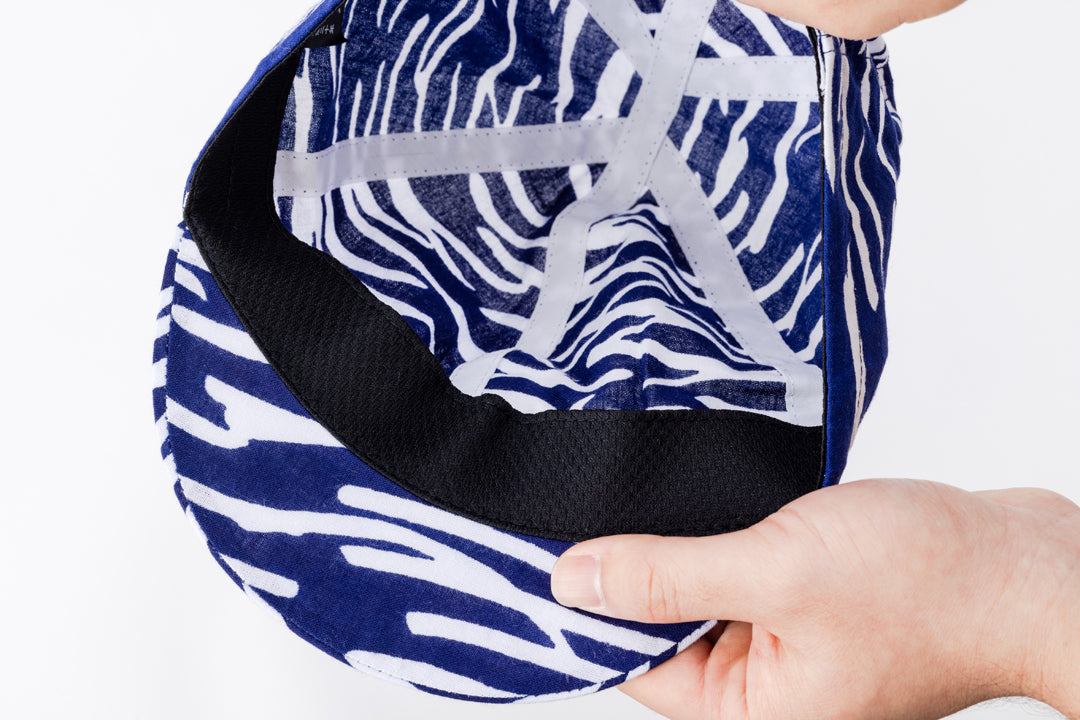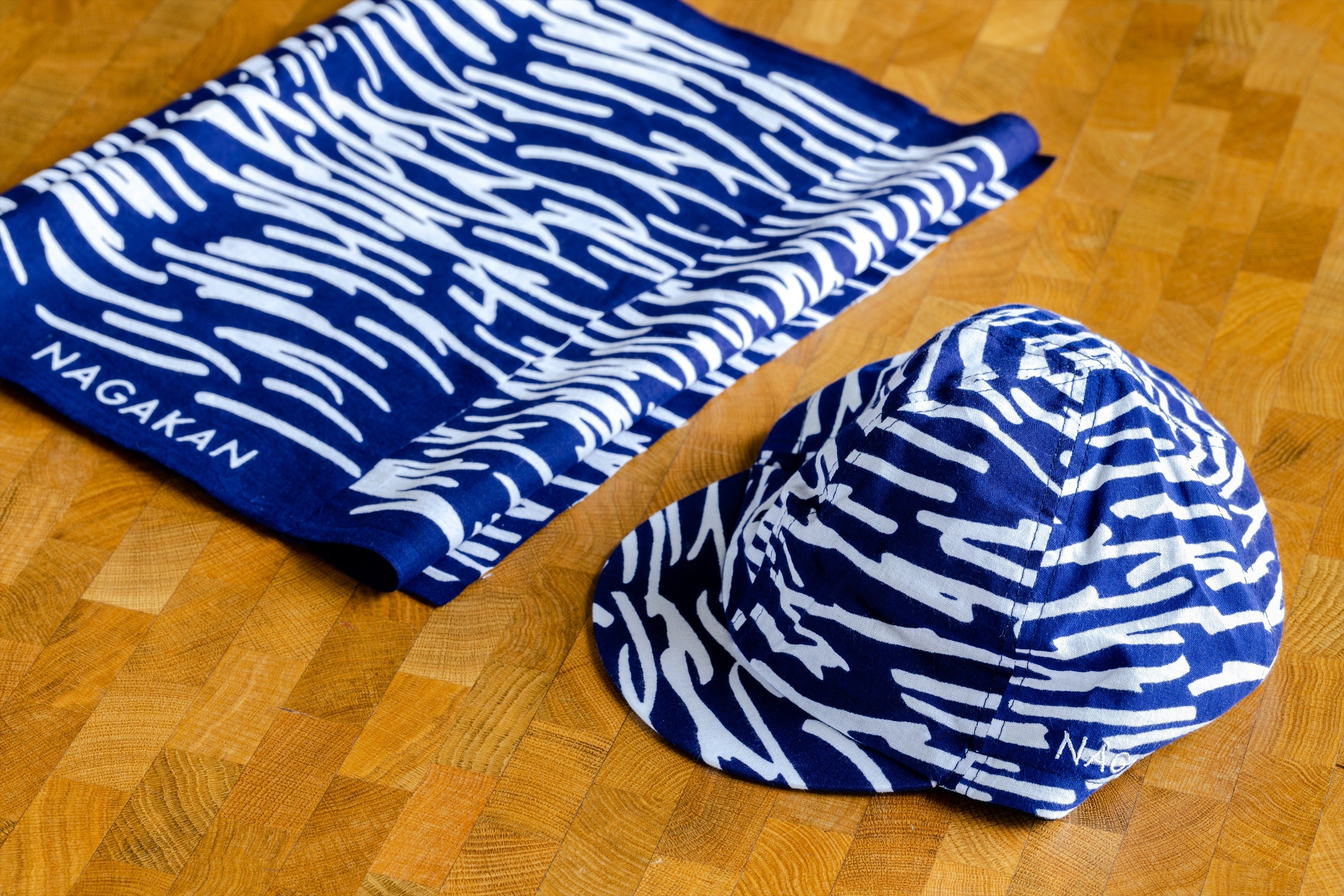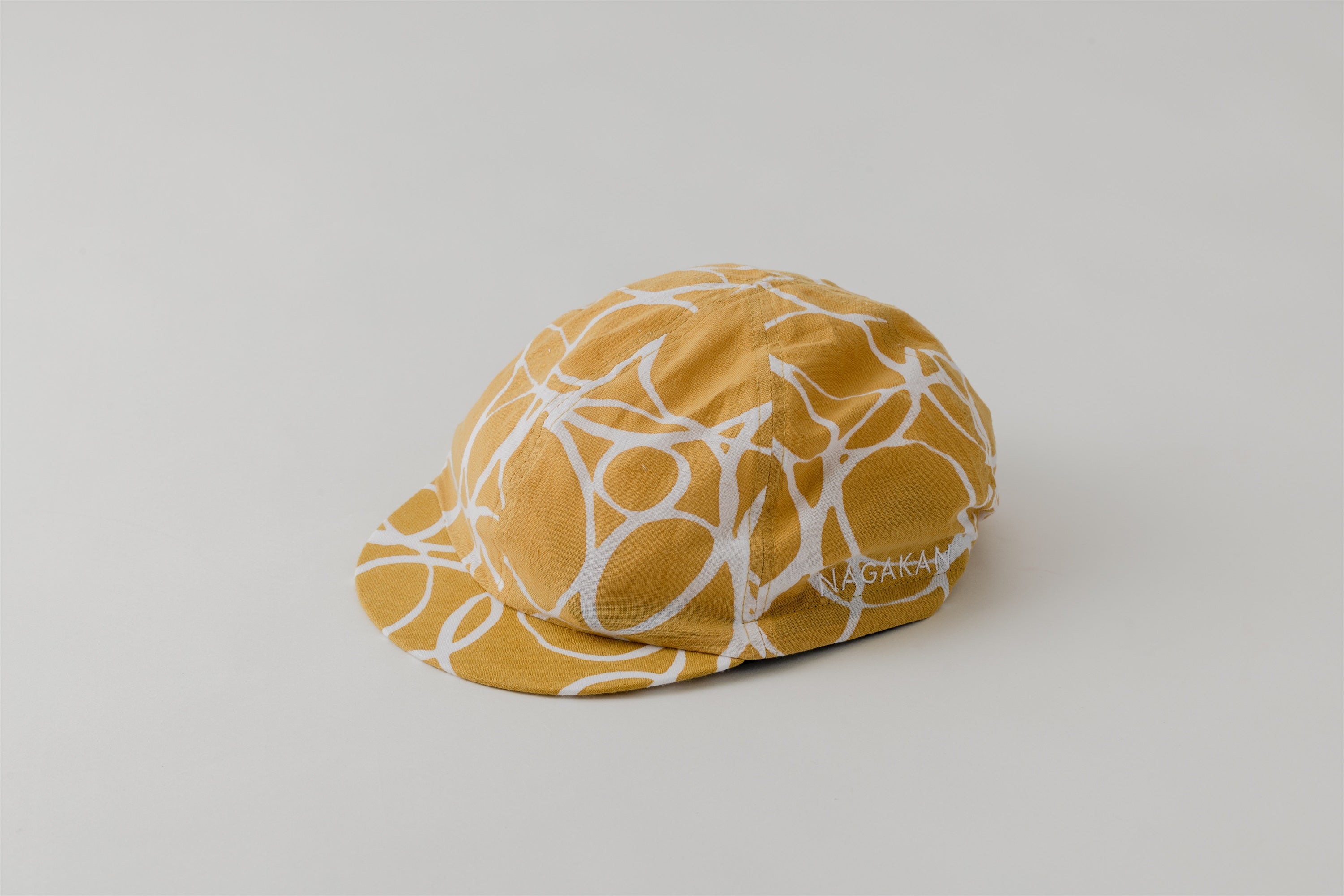Established in 1887 by the skilled dye artisan Kanbei Nagano in Moto-Aramachi (now Aoba-ku Ichibancho), the Nagakan Dyeing Factory boasts a rich history of crafting happi coats and aprons for the city's merchants, craftsmen, and residents in the past. Today, Nagakan continues to employ traditional methods such as hikizome or tenasen, to create a diverse array of products, ranging from shrine banners and izakaya aprons to noren curtains for the local community.
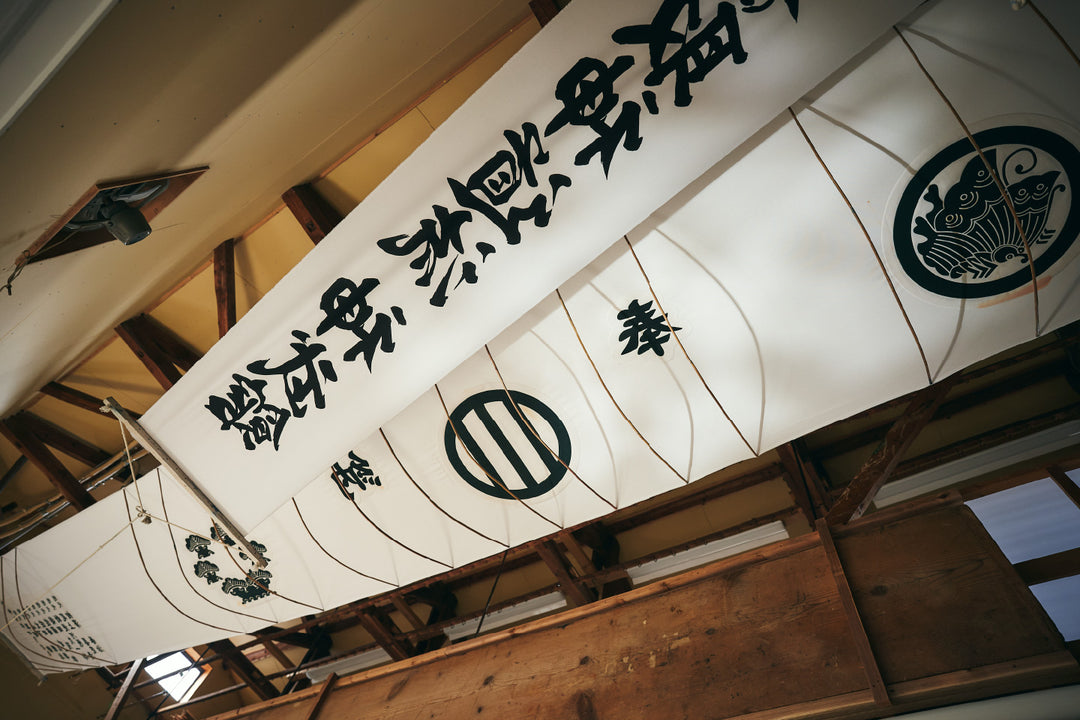
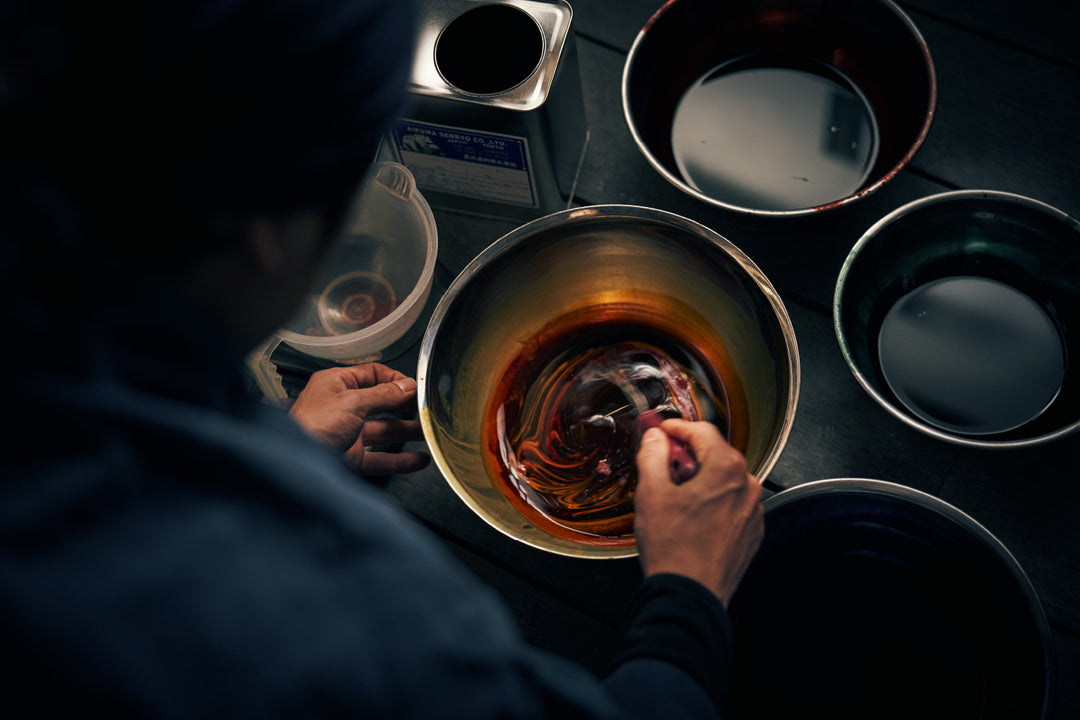
Artisans carefully hand-dye the patterns using the traditional tenasenzome technique, in which different color dyes are used for each pattern frame. After unrolling the fabric onto the long, slanted table called a nassendai, a wooden spatula with rubber is pulled across the fabric, spreading the dye slowly and evenly to ensure that designs are cleanly printed. This method guarantees a rich and uniform color that harmonizes well together with the soft texture of cotton.
Tenugui, a traditional Japanese cloth, possesses a thin yet highly absorbent quality that ensures quick drying. Unlike bulky towels, their long, slender design makes them a versatile alternative, perfect for use as a handkerchief or wrapping material. Popularized in the Edo period, these long cotton cloths are still widely used in Japan in daily life and often exchanged as gifts.
